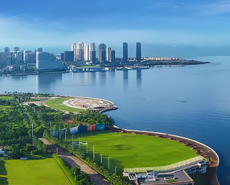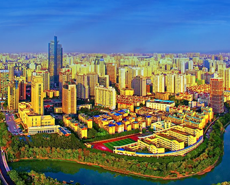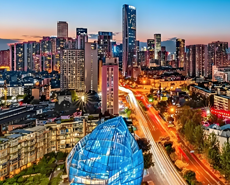
Tin price to rebound in H2 2019
----Interview with Zhang Qinggang
General Manager
Gejiu Jiyuan Mining and Metallurgy Co., Ltd.
General Manager
Gejiu Jiyuan Mining and Metallurgy Co., Ltd.
Located in Gejiu, Yunnan, the famous tin industrial base and “capital of tin culture”, Gejiu Jiyuan Mining and Metallurgy Co., Ltd. specializes in import business of tin ore, recycling and smelting of tin-bearing tailings, etc.
Asian Metal: Firstly, thank you for accepting our interview. Please give us a brief introduction of your company.
Mr. Zhang: Jiyuan Mining and Metallurgy was founded and registered in Gejiu, Honghe, Yunnan, the famous "capital of tin culture", on 26 May, 2008 with a registered capital of RMB21 million (USD3.06 million). Over the past 11 years, we provided high-quality product, excellent technical support and solid after-sale service to customers all the time. We specialize in recycling of tin-bearing tailings and tin slag, smelting and sales of non-ferrous metals and others and mainly adopt fuming furnace, rotary kiln and electric furnaces in production. Besides, we also engage in import business of tin ore from Myanmar.


Asian Metal: Your company is situated in China-Myanmar border and engaged in trading of Burmese tin ore, so could you tell us production of Burmese tin ore in the most recent year?
Mr. Zhang: Wa State is the main producing area of tin ore in Myanmar, taking more than 90% of the country's total volume, and there are three major tin mines within this area. It's learnt that the output of tin ore dropped to about 55,000 tons in 2018 after reaching the top of 67,000 tons in 2017 and the output is expected to be only about 40,000 tons in 2019. In addition, the grade of tin raw ore decreases to current 1% from the previous level of about 3%. What is worse, no new large-scaled tin mine has been found so far. Under such circumstance, the output of tin ore would go down further. Although some tin ore reserves are found outside this state, they are far below the decline in Wa State.


Asian Metal: Output of Burmese ore kept moving down in recent two years, how much does this situation influence Chinese tin concentrate market? Can you specify that?
Mr. Zhang: As about 40% of tin concentrate supply in China is imported from Myanmar, decreasing output of Burmese tin ore has a strong impact on Chinese market. With lower output of Burmese tin ore, Chinese market doesn’t see increased supply. Thus, smelters are in troubles now, including declined tin ingot output of smelters and fierce competition among smelters. Specifically speaking, treatment charge for tin concentrate 40%min drops to RMB15,000/metal ton (USD2,184/metal ton) at present from the previous level of RMB20,000/metal ton (USD2,912/metal ton). Furthermore, some Chinese smelters began to cut production slightly or produced on a periodical basis from this May. If raw material supply remains tight in the near future, spot supply of tin ingot in Chinese market would be directly affected.
















